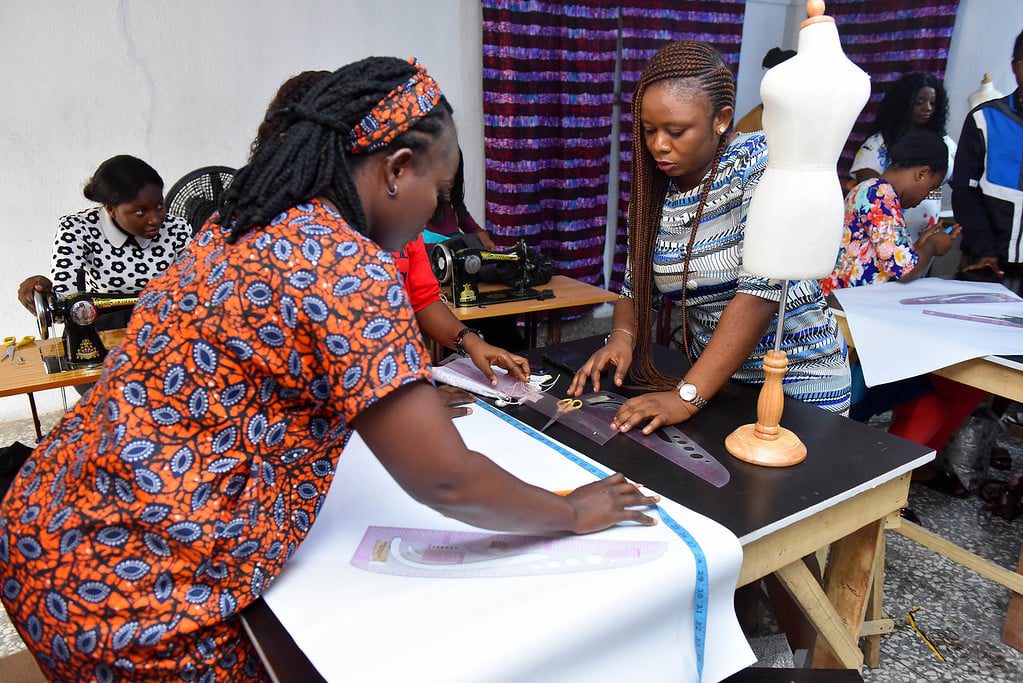
Youth unemployment is one of the most significant development challenges facing governments and development partners in Nigeria today. The country suffers from a “labor market trifecta” of jobless growth, an expanding population, and unemployable youth. Despite decades of reasonably steady economic growth, the Nigerian economy has not generated the jobs required to sustain its large and growing youth population. The sustained levels of unemployment and lack of economic opportunities, especially for the youth, have been linked to the many conflicts and youth restiveness experienced in certain parts of the country, such as the Niger Delta.
Between 2009 and 2011, the Federal Government deployed the Nigerian Youth Employment Action Plan (NIYEAP) to tackle the challenge of youth employment in the country but with moderate success. The goal was to create an enabling environment for youth unemployment. As the relevance of the Action Plan decreased in the face of changing realities, other policies, such as the National Employment Policy (2017) and the National Youth Policy (2019), replaced it. However, none has been able to address the problem in a sustainable manner that would lead to a significant decrease in the youth unemployment rate. According to the National Bureau of Statistics data, from 2014 to early 2020, the youth employment rate was at an average of 25.87 percent. However, with the rise of the COVID-19 pandemic, by the second quarter of 2020, unemployment rates spiked among all demographics. For the youth, it increased from 40.8% in April-June 2020 to 53.4% in October-December 2020.
In 2021, the Federal Government launched the revised NIYEAP (2021-2024) to address youth employment in a comprehensive and coordinated manner based on lessons learned from the previous Action Plan. The NIYEAP will focus on achieving a job creation target of 3.7 million jobs annually. Based on the failure of the earlier policies, sustainability, as well as impact, appears to be a vital issue. Therefore, to achieve this target, there is a need for a model that will sustainably address the problems. The goal is to develop a competent and confident workforce and a corps of local entrepreneurs that can bolster employment in the country.
Against this backdrop, I proffer Youth Employment Pathways (YEP) – a demand-led, evidence-driven, and competency-focused model. It identifies systemic constraints to youth unemployment vis-à-vis the peculiarities-of-statements economy and considers multiple pathways to employment. It supports an entrepreneurship system and strengthens and relies on a network of stakeholders and actors. YEP was initiated by the Partnerships Initiative in the Niger Delta (PIND) in 2018 following extensive research to develop a model of youth training in which marginalized young people are trained in market-relevant skills and subsequently supported into sustainable jobs or enterprises. It focuses on training young people in technical skills and soft skills to prepare them for the marketplace while linking them with access to capital.
Let’s break down all the attributes of YEP.
Demand-led and evidence-driven: A prime challenge confronting Nigerian workforce development is skills mismatch, with a significant misalignment between labor supply and demand. The YEP model prioritizes systemic research and analysis to understand how the employment market in a specific State or region functions and determine the particular occupations and technical and soft skill sets currently in demand. Once the critical sectors in the State are identified, interventions that consider the economic environment’s peculiarities are then designed accordingly.
Competency-focused: The next step is ensuring the youth have the right skills and knowledge to fit into the prevalent sectors seamlessly. This involves skills-building (technical and soft skills) and training where relevant. An essential criticism of technical and vocational training as a panacea for youth unemployment is based on the fact that most people often abandon the craft after the training. Some reasons are a lack of funding, peer support, and formalization within specific sectors and industries, which brings competency and structure into question. Hence, the YEP model promotes a competency-based approach to technical and vocational training that ensures those trained use their acquired skills and thrive within these sectors. The method involves forming partnerships with relevant institutions, such as Nigeria’s National Board for Technical Education (NBTE), to develop a competency framework that would lead to the accreditation of training programs and participants. The competency framework should align with the national skills qualification framework by NBTE.
Multiple pathways to employment and supporting an entrepreneurship system: The YEP model considers multiple pathways to job creation and skills development. One broad path leads to formal waged employment, while another to self-employment/entrepreneurship. The model therefore includes post-training support that assists young entrepreneurs, emerging startups, and state business service providers navigate the harsh conditions of the business world. This support system could be in business advisory services, market linkages, or access to finance – either as investment or working capital for growth and expansion.
Building and strengthening a network of stakeholders: The research and analysis phase of the YEP model includes stakeholder mapping and analysis of primary actors within the youth employment ecosystem: employers, government, private sector, policymakers, educational and training institutions, civil society, media, and of course, the youth job seekers. The model works to strengthen coordination and collaboration, facilitate positive engagements, and provide support and technical assistance to these actors. This action ensures the development of an enabling environment for skills development training for employment or entrepreneurship to thrive and for a country/state-wide adoption or adaptation of the model into respective youth employment programming.
A combination of needs-specific training for the youth – including providing capacity building for the training organizations – as well as supporting them towards employment or entrepreneurship will not only move a cohort of young people from unemployment into a career but also stimulate the local economy through upskilling of enterprise as well as strengthen the ecosystem of actors and their interactions.
This article has been published on The Guardian, Business Day, Leadership and Vanguard Newspapers



